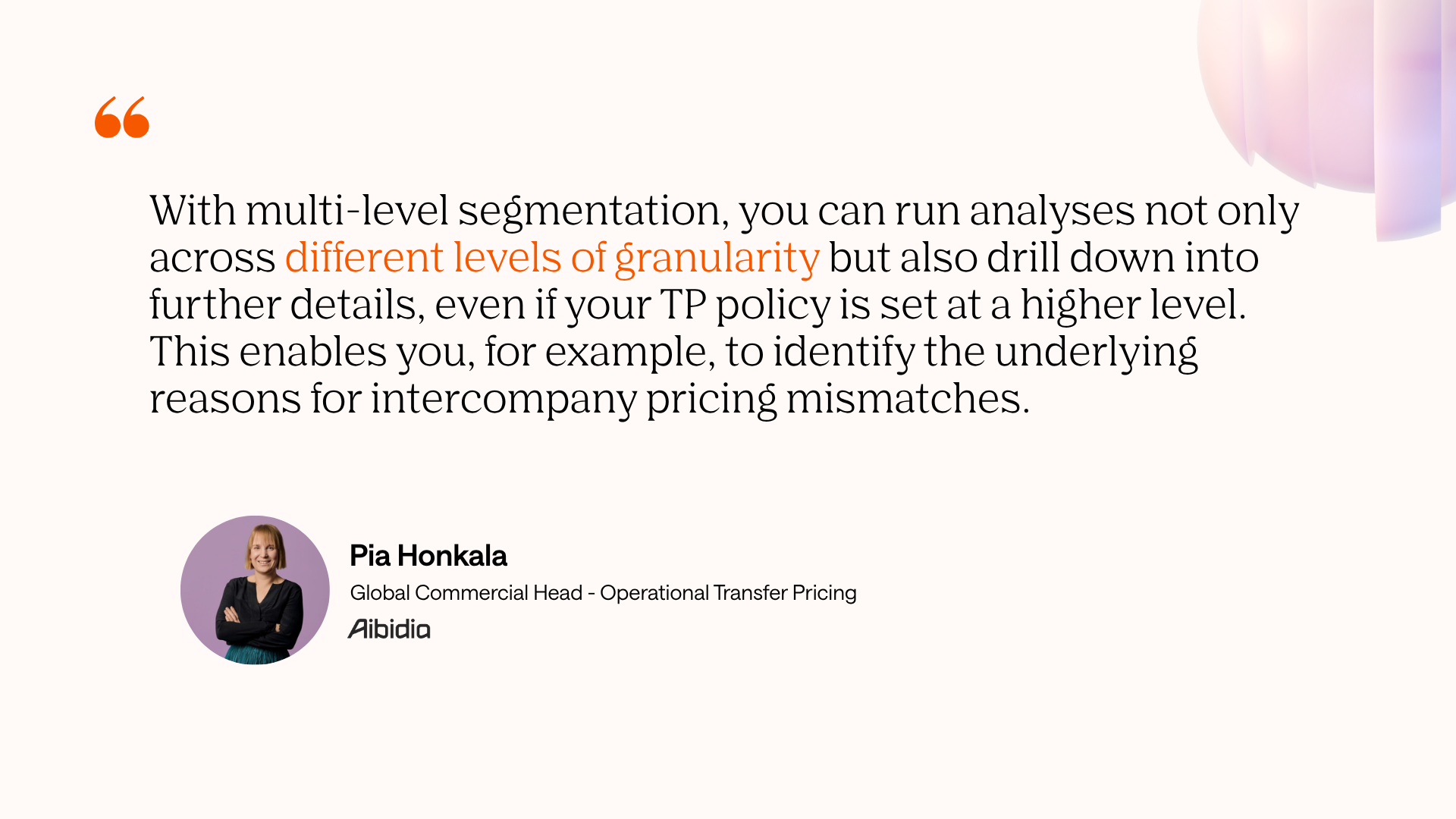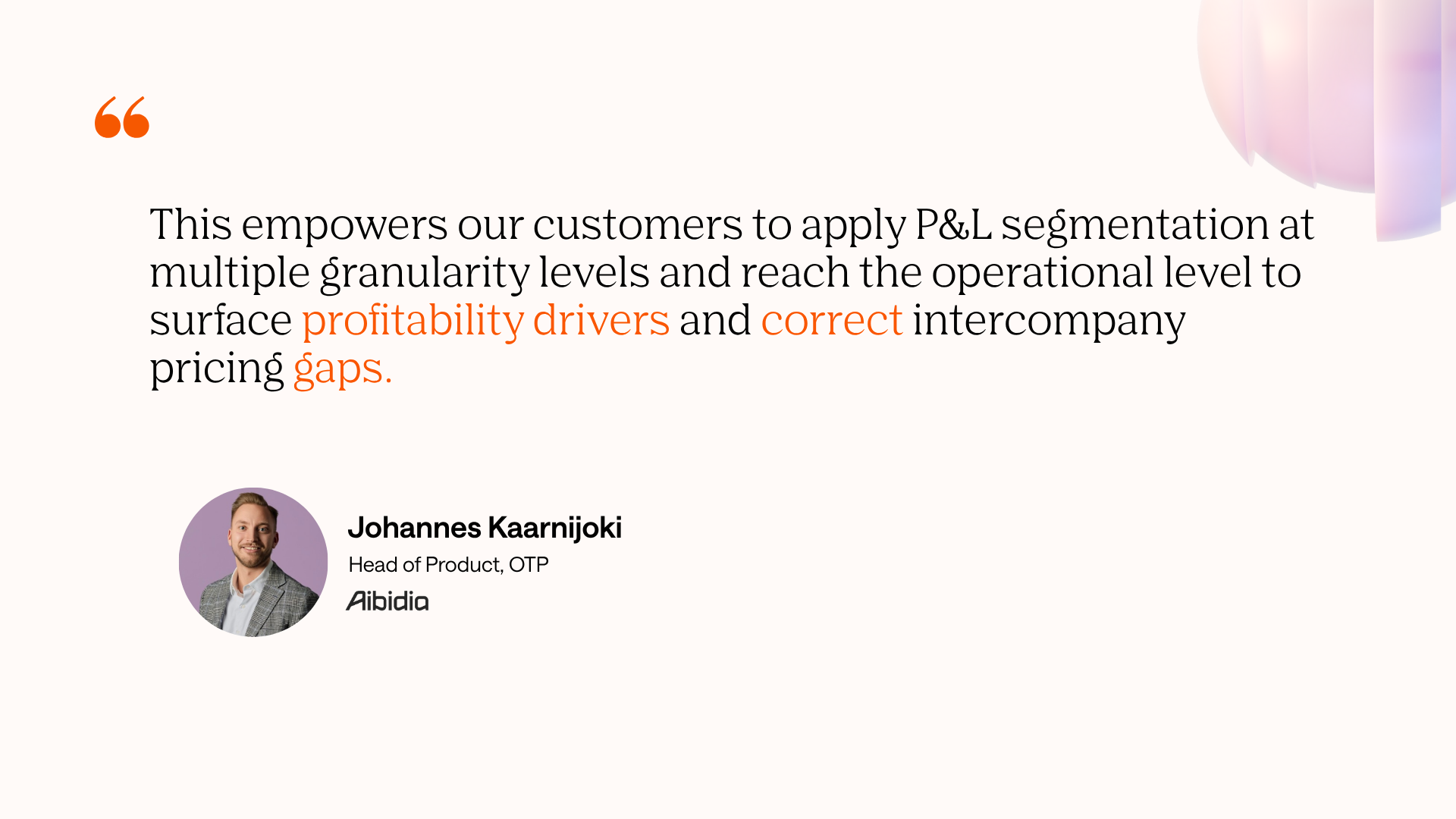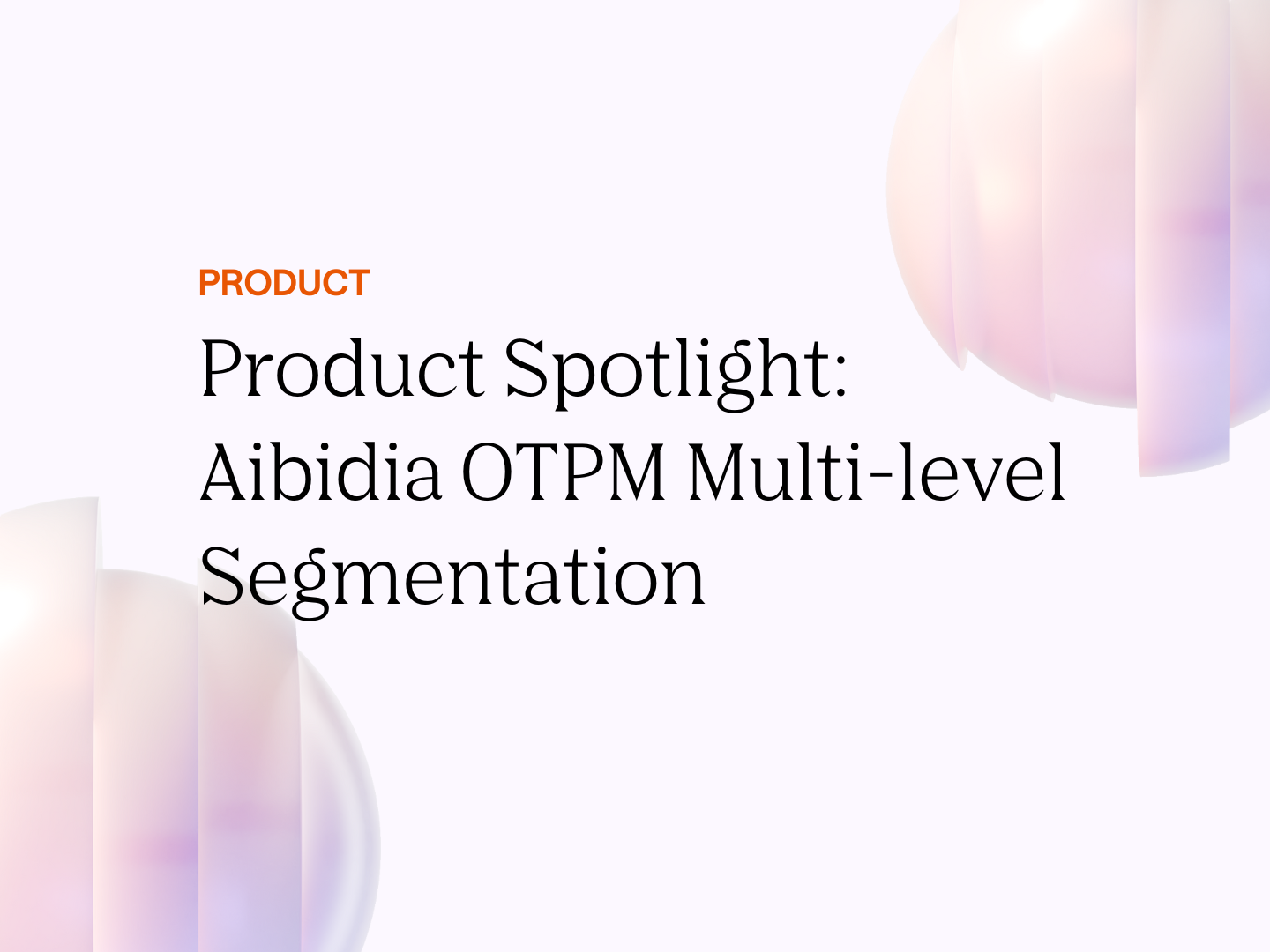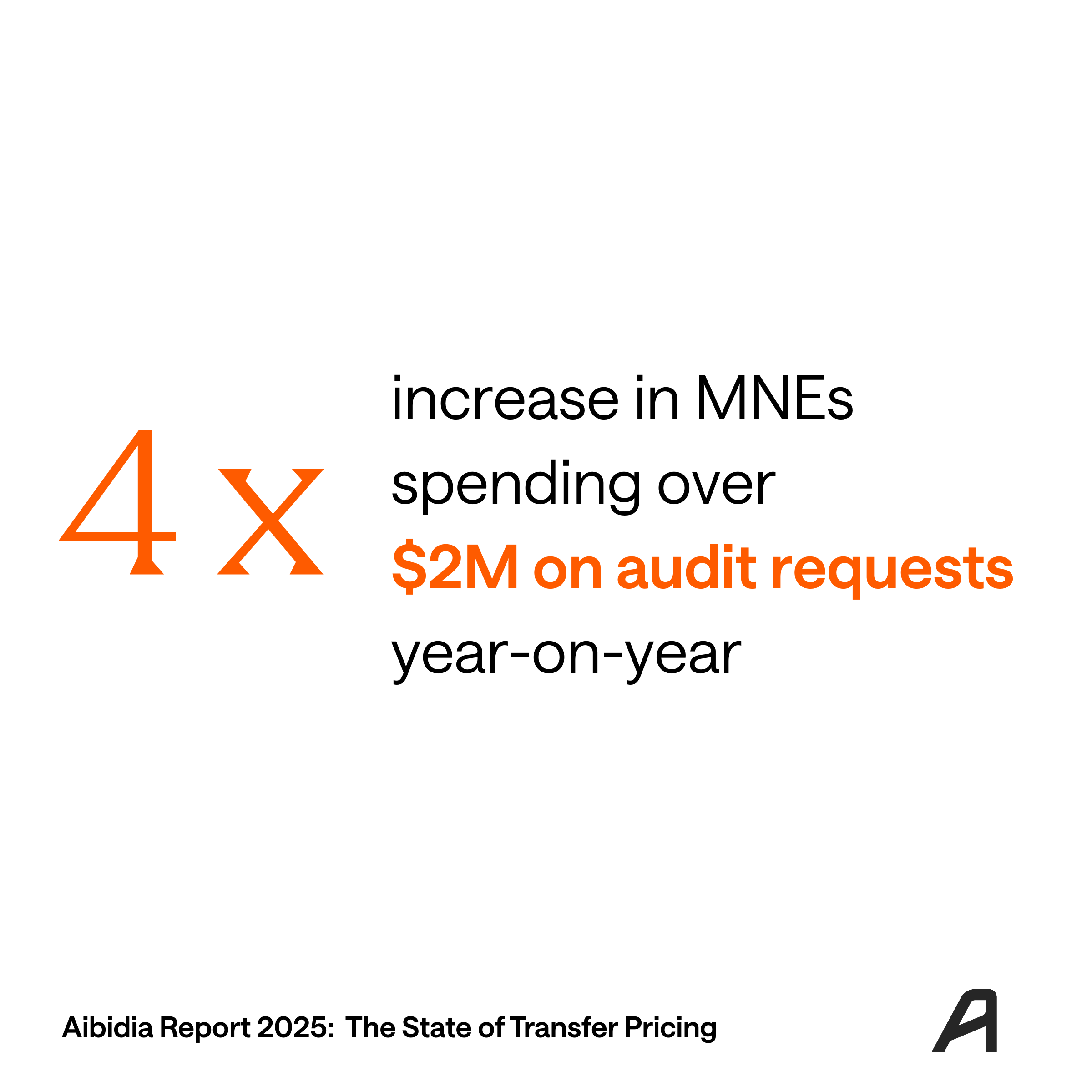.png)
According to the Aibidia Industry Report 2025, more than 70% of multinational enterprises still rely on decentralized systems and Excel-based workflows for transfer pricing, while only 14% use structured data effectively. This gap creates what every tax/TP and finance leader knows too well: fragmented visibility, slow processes, and little confidence in the numbers.
Aibidia Operational Transfer Pricing Management (OTPM) was purpose-built by leading TP experts to close that gap.
It connects financial and tax data across systems, regardless of the underlying source system, automating processes that enable companies to gain visibility into profitability, control, and compliance, all within a unified data structure.
With the latest addition of multi-level segmentation, Aibidia OTPM now enables companies to analyse profitability at any level of granularity - from policy to trading partner, product or brand - helping teams understand where profit is created, how it is shared, and why results deviate. This ultimately helps link transfer pricing to your business, revealing the profitability of different value chains.
Context: More dimensions, more profitability visibility across the business
In many organisations, transfer pricing monitoring occurs at only one level, either by function or legal entity. This limits how teams can evaluate whether results align with overall TP or group policies. It also limits the understanding of profitability across business segments
Multi-level profit monitoring within Aibidia OTPM changes that.
It allows companies to analyse profitability exactly how the business operates, by trading partner, business unit, product line, SKU, brand, or any other necessary segmentation. This means that finance and TP users can now uncover profitability insights that were previously buried in Excel or siloed systems.
As Pia Honkala, Global Commercial Head at Aibidia, explains:

How Aibidia Automates Operational Transfer Pricing Management
The old way of managing OTP calculations is no longer sufficient. Without automation and technology in the mix, finding out where your company stands on the profitability side quickly becomes a time-consuming and manual exercise, with data scattered across teams and systems.
Aibidia OTPM addresses all these challenges by providing one connected, automated platform that solves the data challenges at its source and lets that data flow across teams, departments, and systems. It provides automation of OTP to reveal global profit allocation with greater visibility and control over data, processes, and team collaboration.
What is Aibidia OTPM Multi-Level Segmentation?
Multi-level segmentation enables users to analyze profit and loss at varying levels of detail. You can start at the policy level, then zoom in by trading partner or product group, depending on the data available.
Highlighted Key Capabilities:
- View profitability performance by function, entity, or region
- Compare margins by trading partner
- Analyse results by business, product line, SKU or brand
- Flexibility to analyse results by any chosen dimension or segment
- Set different target rates for different levels (for example, policy vs. policy and trading partner)
This gives teams a much richer understanding of profit allocation and value creation, all from a structured and consistent model. It makes it easier to monitor results against transfer pricing policies, understand where differences occur, and make better business decisions based on
As Johannes Kaarnijoki, Head of Product, OTP, at Aibidia, notes:

How does it work in practice?
At the core of multi-level segmentation is how Aibidia brings data to the solution, that is, the Mapping Management functionality. It is a rule engine that defines exactly how data flows into segments. It enables users to create, update, and refine their own segmentation logic directly within the interface, ensuring that the analysis reflects the latest policies and business structure.
Compared to other solutions in the market, Aibidia OTPM offers a self-service platform where everything is manageable by the user, providing full flexibility according to the user's needs.
This approach gives TP, tax, and finance teams full ownership of how results are calculated and presented. It ensures that the data structure in OTPM accurately reflects business reality and provides visibility into global profit allocation according to each chosen segment.
Automating operational transfer pricing with Aibidia
Operational transfer pricing has outgrown Excel. The volume, frequency, and complexity of intercompany data now require solutions that are transparent, connected, and capable of scaling with the business and market needs.
With multi-level segmentation, Aibidia OTPM brings that standard into reach by helping multinationals move from reactive reconciliation to proactive management of global profit allocation. It enables teams to see the full picture with high flexibility, take corrective action early, and stay compliant without losing control of their data.
Have questions or want to see it in action? Book a demo to see how Aibidia helps you solve data challenges, automate OTP, and achieve over 80% time saving in getting calculations on board.





.png)


.png)

.png)
.png)






.svg)
